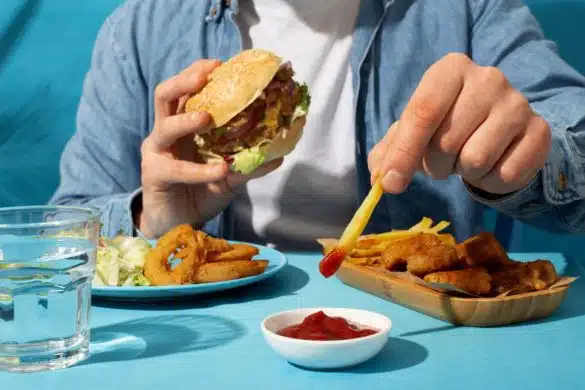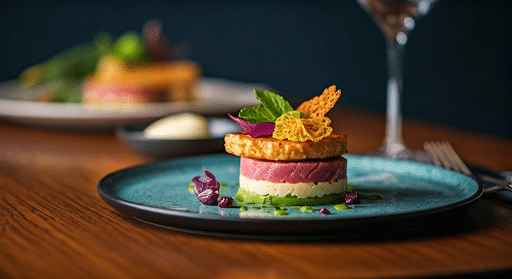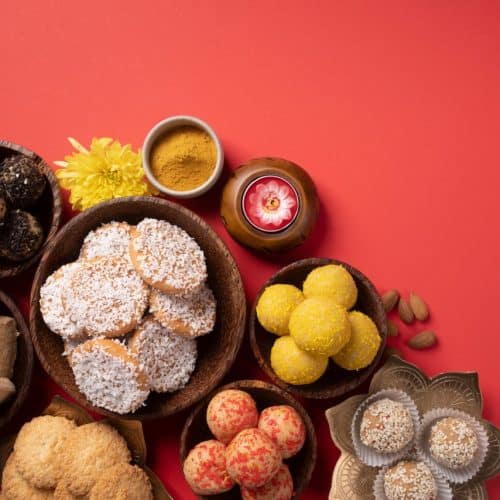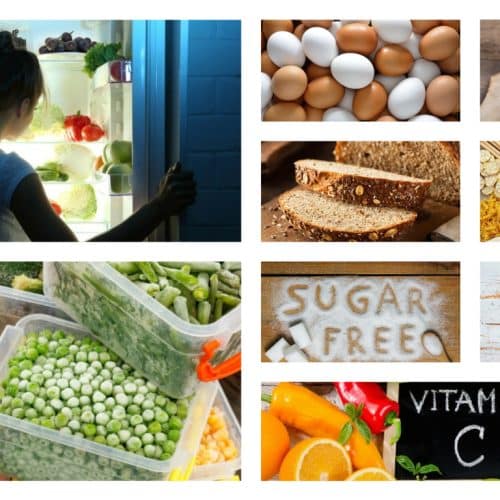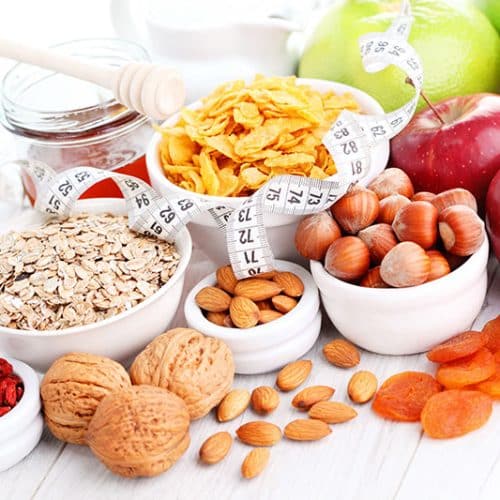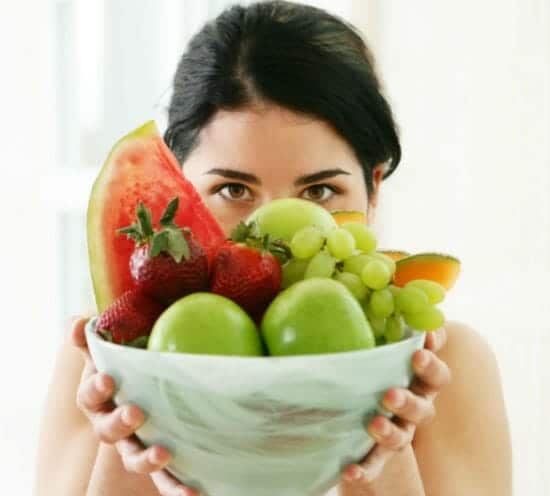Key Highlights
- Gestational diabetes is a temporary condition of high blood sugar that develops during pregnancy, often due to pregnancy hormones.
- Managing this condition involves a healthy diet plan to keep your blood glucose and your blood sugar levels stable for both your and your baby’s health.
- It’s crucial to avoid sugary drinks and desserts, which can cause your blood sugar to spike rapidly.
- You should also limit refined carbohydrates like white bread and pasta, as they can quickly raise your glucose.
- Focus on eating whole grains, lean proteins, and plenty of vegetables as part of a balanced diet.
Pregnancy is an exciting time, but it can also bring unexpected health challenges. One common condition that can arise is gestational diabetes, which is high blood sugar that develops during pregnancy.
This can happen even if you’ve never had diabetes before. While many women don’t notice any symptoms of gestational diabetes, it’s important to get tested as recommended by your doctor.
Don’t worry, though! Managing your diet is a powerful way to control your blood sugar and ensure a healthy pregnancy for you and your growing baby. Next, we will explore how this condition can affect your baby and your own body in this detailed blog.
How Does Gestational Diabetes Affect the Baby?
Uncontrolled gestational diabetes can pose several risks to your unborn baby. When you have high blood sugar levels, the excess glucose crosses the placenta, which can cause your baby to grow larger than normal. This condition, known as macrosomia, may lead to a difficult delivery or the need for a C-section. Additionally, gestational diabetes can increase your risk of high blood pressure during pregnancy.
In some cases, the baby’s large size can also lead to a premature birth. After delivery, babies born to mothers with unmanaged gestational diabetes may experience a sudden drop in their own blood sugar, which could lead to seizures.
They might also face breathing difficulties right after birth and have a higher risk of obesity and developing type 2 diabetes later in life, particularly if there is a history of gestational diabetes in their mother’s past pregnancies.
If you’re looking for inspiration, explore these healthy Indian recipes for balanced blood sugar that are both nourishing and flavourful.
How Gestational Diabetes Affects Blood Sugar Levels?
During pregnancy, your body produces more hormones to help your baby grow. These pregnancy hormones, however, can interfere with the way your body uses insulin, which may lead to some side effects. Insulin is the hormone responsible for moving glucose (sugar) from your blood into your cells for energy.
This interference can lead to insulin resistance, meaning your body doesn’t respond to insulin as well as it should. As a result, glucose can build up in your blood, causing high blood sugar levels, which is a risk factor for heart disease, while low blood sugar can also occur under certain circumstances.
Managing diabetes becomes easier when you know what to eat. This list of foods for diabetics can guide you toward smarter, blood-sugar-friendly choices.
What Categories of Foods Should You Avoid In Gestational Diabetes?
While it’s key to cut down on certain high-GI foods, replacing them with healthy foods and natural foods that provide the right nutrients makes all the difference. Including protein-rich foods to keep glucose stable can help balance meals and reduce sugar fluctuations.
Here is a gestational diabetes foods to avoid list;
1. Refined Carbohydrates
Refined carbohydrates have been stripped of most of their fibre and nutrients, which means your body digests them very quickly. This rapid digestion causes a swift and significant increase in your blood sugar. Because these foods have a high glycemic index, information from food labels suggests that they are best avoided or strictly limited when you have gestational diabetes, especially in terms of the amount of carbohydrates consumed.
For a healthier pregnancy, it’s safer to limit these foods:
- White bread
- White rice
- Pasta made from white flour
- Many breakfast cereals
2. Sugary Foods, Snacks, and Desserts
Even foods with natural sugars, like fruit, need to be eaten in moderation to maintain a healthy weight and energy levels. While they are a healthier choice than processed sweets, portion control is still needed. Cravings for sweets can be strong during pregnancy, but giving in to sugary treats can make managing your condition much harder.
Try to eliminate or severely limit these items in your diet:
- Cakes, cookies, and pastries
- Ice cream
- Candy and chocolates
- Jams and jellies
- Sweetened yogurts
3. High-Starch Foods and Grains (Rice, Bread, Potatoes)
Certain high-starch foods can behave similarly to sugar in your body, causing your glucose levels to rise quickly. This category includes some common staples like
- Potatoes
- White rice
- White bread.
- Corn,
- Peas
4. Fruits to Avoid in Gestational Diabetes
While fruits are generally considered healthy, not all of them are ideal for those managing gestational diabetes. Some fruits have a high glycemic index or sugar content, which can lead to rapid spikes in blood glucose levels. It’s not always about completely eliminating them, but portion control and timing are crucial.
Here is a list of fruits that are best avoided, or at least consumed in moderation, during gestational diabetes: Watermelon
- Pineapple
- Mango
- Lychee
- Grapes (especially in large portions)
- Bananas (overripe bananas in particular)
- Dates
- Raisins and other dried fruits
- Cherries (in excess)
- Jackfruit
If you need inspiration for your weekly meal plan, here are 20 easy diabetic dinner recipes from Indian cuisine that are both tasty and suitable for managing blood sugar.
What Are the Gestational Diabetes Diet Foods to Include?
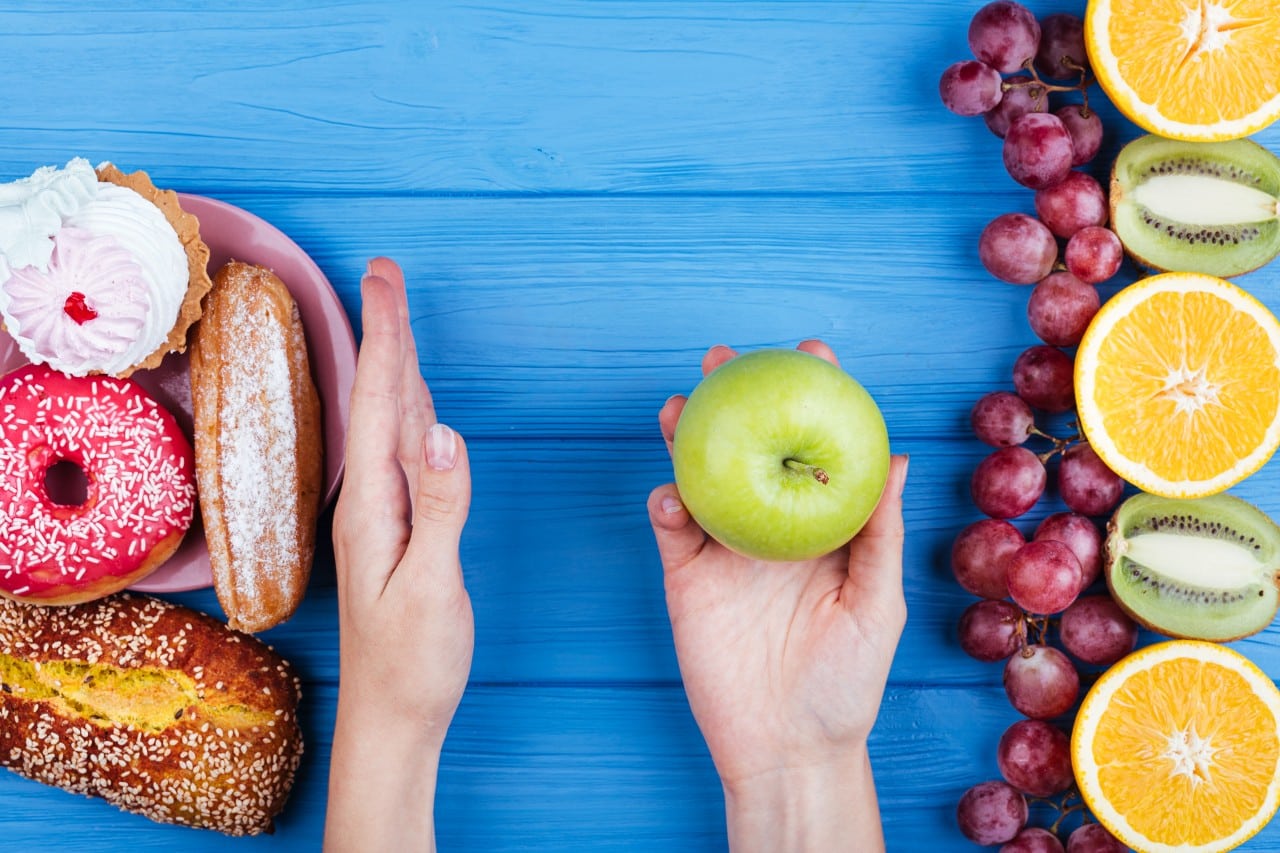
Foods to avoid during gestational diabetes include junk food processed items and sugary snacks
Managing gestational diabetes is easier when you focus on nourishing, blood sugar–friendly foods. Here are the top picks to include in your daily meals:
1. Whole Grains
Whole grains like oats, quinoa, and brown rice digest slowly, providing long-lasting energy while keeping blood sugar levels stable. Their high fibre and nutrient content make them an ideal choice for breakfast or lunch during pregnancy.
Recipe 1: Quinoa Idli
Soft, fluffy, and protein-rich, these Quinoa Idlis are a twist on traditional idlis, making for a light and energising breakfast. It’s low-GI and a fantastic gluten-free option for a steady morning start.
Ingredients:
- 1 cup quinoa
- ½ cup urad dal
- ¼ cup rice
- Salt, water as needed
Recipe:
- Soak quinoa, dal, and rice overnight, then grind till smooth.
- Ferment batter for six hours to enhance softness and digestibility naturally.
- Pour into greased idli moulds and steam until fluffy.
- Serve warm with mint yoghurt or coconut chutney dip.
Recipe 2: Oats Idli
These high-fibre, soft Oats Idlis release energy slowly, keeping blood sugar stable. A comforting and nourishing breakfast for expecting mothers managing diabetes.
Ingredients:
- 1 cup oats (powdered)
- ½ cup semolina
- ½ cup yoghurt
- Salt, mustard seeds
Recipe:
- Roast oats and semolina until fragrant, light, and golden.
- Mix with yoghurt and salt to form a thick, pourable batter.
- Steam in idli plates until soft and cooked through evenly.
- Serve hot with tomato chutney or coriander yoghurt sauce.
Recipe 3: Spicy Oats Kozhukattai
Savoury, Spicy Oats Kozhukattai that combine gentle spice and high fibre for a satisfying, diabetes-friendly snack.
Ingredients:
- 1 cup oats
- ¼ cup rice flour
- 1 green chilli, chopped
- Salt, cumin, and coriander leaves
Recipe:
- Roast oats lightly, grind coarsely, and combine with rice flour.
- Add water, chilli, salt, and cumin to make a smooth dough.
- Shape small dumplings and steam till firm, aromatic, and springy.
- Serve warm with mint chutney or light yoghurt dip.
2. Lean Proteins
Lean proteins such as chicken, fish, lentils, and eggs support muscle growth, balance hormones, and stabilise blood sugar. They digest slowly, keeping you full longer and reducing hunger spikes.
Recipe 1: Mediterranean Chicken Salad
Fresh, zesty, and rich in lean protein, the Mediterranean Chicken Salad combines grilled chicken, quinoa, and chickpeas for sustained energy, a perfect low-GI lunch for expectant mothers.
Ingredients:
- ½ cup cooked quinoa
- ½ cup boiled chickpeas
- 1 cup grilled chicken breast, sliced
- 1 cucumber, diced
- ½ bell pepper, chopped
- 1 tbsp olive oil, lemon juice, herbs, and salt
Recipe:
- Combine quinoa, chickpeas, chicken, and veggies in a large bowl.
- Drizzle olive oil and lemon juice for Mediterranean brightness.
- Toss lightly to coat all ingredients evenly and chill briefly.
- Serve fresh for a balanced, blood-sugar-friendly meal.
Recipe 2: Smoked Chicken Salad with Avocado & Tarragon Dressing
The creamy, flavour-packed Smoked Chicken Salad with Avocado and Tarragon Dressing pairs juicy chicken with avocado for healthy fats and protein. A refreshing, low-carb meal that keeps you energised without glucose spikes.
Ingredients:
- 1 cup shredded smoked chicken
- ½ avocado, sliced
- 2 cups mixed greens
- 1 tbsp Greek yoghurt
- ½ tsp tarragon, lemon juice, pepper
Recipe:
- Combine chicken, avocado, and greens in a chilled mixing bowl.
- Whisk yoghurt, lemon juice, and tarragon for a smooth dressing.
- Drizzle dressing evenly, toss gently, and refrigerate briefly.
- Serve cool as a complete, satisfying, low-GI salad.
Recipe 3: Coronation Chicken Salad
The creamy, mildly spiced, protein-rich Coronation Chicken Salad that offers a satisfying crunch and rich flavour while keeping your meal diabetes-friendly.
Ingredients:
- 1 cup cooked chicken, shredded
- 2 tbsp Greek yoghurt
- 1 tbsp chopped almonds
- ½ tsp curry powder
- Lemon juice, salt
Recipe:
- Mix yoghurt, lemon, and curry powder till creamy and smooth.
- Add chicken and almonds, tossing well for even coating.
- Chill salad for fifteen minutes to deepen flavour harmony.
- Serve cold with lettuce or millet crackers.
Recipe 4: Tarka Dhal
A comforting, protein-packed Tarka Dhal that’s full of flavour and fibre. Perfect with brown rice or rotis for a warm, balanced meal.
Ingredients:
- 1 cup yellow lentils
- 1 tomato, ½ onion (chopped)
- 1 tsp cumin seeds
- ½ tsp turmeric, salt
Recipe:
- Boil lentils until soft and slightly thick in consistency.
- Sauté onion, tomato, and cumin in ghee until fragrant and golden.
- Add lentils and turmeric, and simmer for ten minutes on low flame.
- Serve warm with brown rice or jowar rotis.
Recipe 5: Dal in Coconut Milk
Smooth, mildly spiced, and packed with protein and good fats, this Dal in Coconut Milk makes for a gentle yet filling meal.
Ingredients:
- 1 cup red lentils
- 1 cup coconut milk
- 1 onion, sliced
- ½ tsp cumin, turmeric, salt
Recipe:
- Cook lentils until soft, smooth, and easy to mash.
- Add coconut milk and simmer till gently thick and aromatic.
- Sauté onion, cumin, and turmeric; pour over lentils for depth.
- Serve hot with quinoa or millet rice for balance.
Recipe 6: Warm Red Lentil Salad with Goat Cheese
A tangy, high-protein salad featuring red lentils and creamy goat cheese, the Warm Red Lentil Salad with Goat Cheese is a nutrient-packed side or light meal.
Ingredients:
- 1 cup cooked red lentils
- ¼ cup goat cheese
- ½ cup spinach
- 1 tbsp olive oil, lemon juice
Recipe:
- Mix lentils, spinach, and cheese gently in a salad bowl.
- Add olive oil, lemon juice, and toss to combine.
- Chill briefly for freshness or serve warm immediately.
- Enjoy as a light, nutritious dinner or side dish.
3. Healthy Fats
Healthy fats like avocados, seeds, olive oil, and nuts are essential for both you and your baby’s development. They help maintain stable blood sugar and provide steady, long-lasting energy throughout the day.
Recipe 1: Okra with Green Mango and Lentils
A tangy, fibre-rich curry that balances flavours with creamy lentils and healthy fats, this Okra with Green Mango and Lentils goes great with brown rice or gluten-free flatbreads.
Ingredients:
- 1 cup chopped okra
- ½ cup cooked lentils
- ¼ cup diced green mango
- 1 tsp cumin, turmeric, salt
Recipe:
- Sauté okra lightly until soft yet still bright green.
- Add mango, spices, and lentils; cook gently till fragrant.
- Simmer for ten minutes to combine flavours and thicken the sauce.
- Serve warm with brown rice or amaranth flatbreads.
4. Non-Starchy Vegetables
Loaded with fibre and antioxidants, non-starchy vegetables add volume and nutrients without affecting blood sugar. They’re versatile, vibrant, and perfect for wraps, stir-fries, or soups.
Recipe 1: Mixed Veggie Wraps
A bright, crunchy Mixed Veggie Wrap full of low-carb vegetables and a creamy yoghurt spread, perfect for a filling, quick lunch.
Ingredients:
- 1 whole-grain or millet wrap
- ½ cup shredded carrots and cabbage
- ¼ cup bell peppers
- 1 tbsp hummus or yoghurt
Recipe:
- Spread hummus evenly over the wrap for a creamy base.
- Add colourful vegetables, layer neatly for flavour balance.
- Roll tightly and slice diagonally into easy bite-sized pieces.
- Chill briefly before serving with yoghurt dip.
5. Low-Glycemic Fruits
Low-GI fruits such as peaches, apples, and berries deliver sweetness safely. They’re rich in vitamins, fibre, and antioxidants, perfect for a nourishing dessert or mid-day refreshment.
Recipe 1: Grilled Peaches with Cinnamon and Yoghurt
A naturally sweet, low-GI Easy and Simple Grilled Peaches that’s creamy, fragrant, and lightly caramelised, a perfect guilt-free treat after meals.
Ingredients:
- 2 ripe peaches, halved
- ½ cup Greek yoghurt
- ½ tsp cinnamon
- 1 tsp honey (optional)
Recipe:
- Grill peaches cut-side down until lightly golden and tender.
- Top with yoghurt and drizzle honey for subtle sweetness.
- Sprinkle cinnamon for aroma and serve warm or chilled.
- Enjoy as a healthy dessert or a refreshing post-meal treat.
Looking for dinner ideas during pregnancy? Try these 17 pregnancy dinner recipes that are tasty, nutritious, and easy to cook.
What Drinks Are Unsafe With Gestational Diabetes?
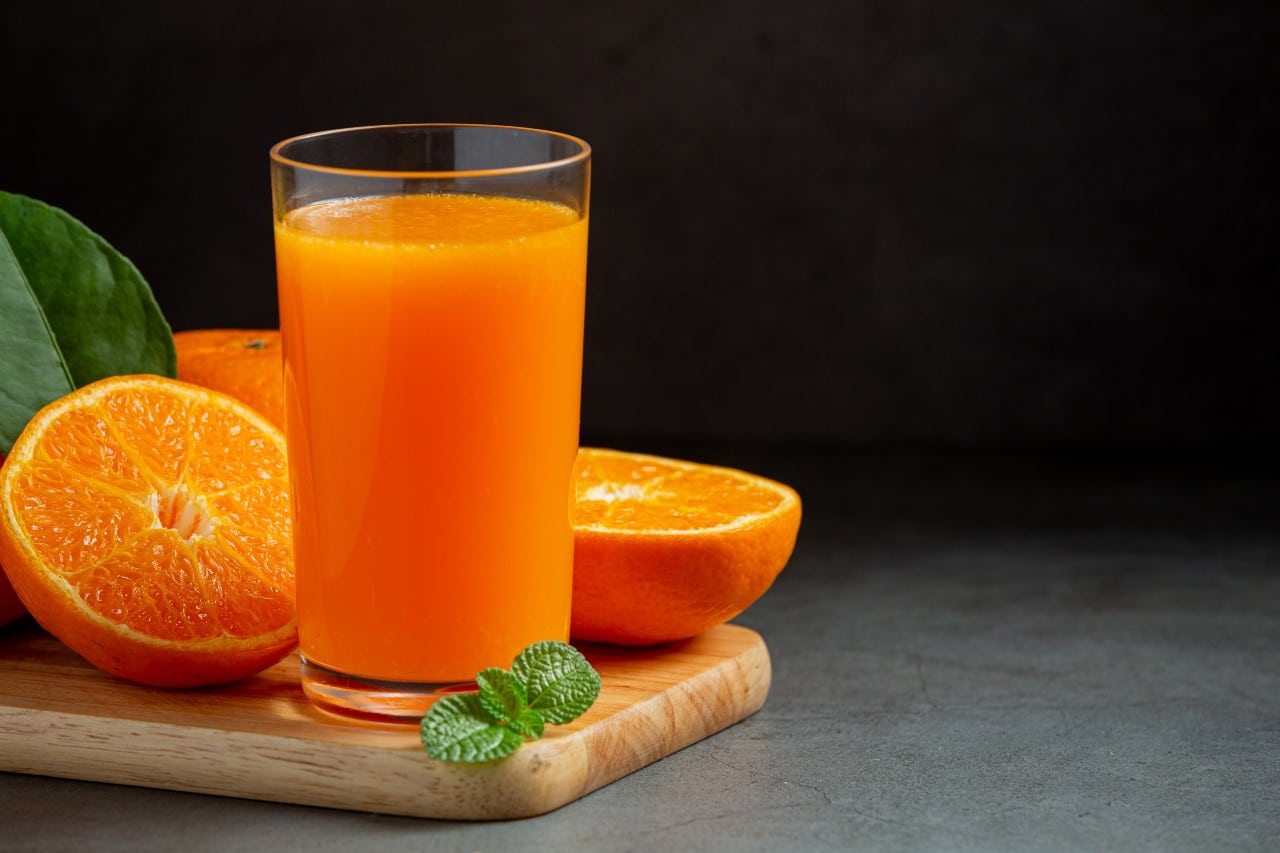
Fruit juice to avoid during gestational diabetes
When managing gestational diabetes, drinks can be just as impactful as food. While some beverages hydrate and nourish, others can send your blood sugar soaring.
Here’s what to avoid and what to approach with caution.
1. Fruit Juices, Soft Drinks, and Sweetened Beverages
Sugary drinks like sodas, fruit juices (even 100% natural), energy drinks, and sweetened iced teas spike blood sugar quickly.
They strip away fibre and provide empty calories, making them unsuitable for gestational diabetes. Whole fruits are always the better choice.
Better Option: Lemon Ginger Drink
This spiced lemon ginger drink offers warmth and digestion support. In pregnancy, though refreshing, the added sugars (jaggery, honey) make it one to enjoy very cautiously.
Ingredients:
- 2 cups water
- ½ tsp grated ginger
- 1 tsp lemon juice
- Jaggery or honey, as required
Recipe:
- Boil water and ginger until fragrant.
- Add jaggery or honey and stir to dissolve.
- Remove from heat, strain into glasses.
- Add lemon juice, mix, and serve warm or chilled.
2. Drinks with Artificial Sweeteners
Many “sugar-free” or “diet” drinks contain artificial sweeteners like aspartame or sucralose. While they have fewer calories, their long-term safety in pregnancy is still under study. Some can alter gut microbiota and potentially impact metabolism. It’s safest to limit them and choose natural, unsweetened alternatives instead.
Better Option: Infused Sparkling Water
This is a naturally flavoured drink that’s refreshing, sugar-free, and hydrating, perfect for curbing cravings without affecting glucose levels.
Ingredients:
- 1 litre sparkling water
- 3–4 cucumber slices
- A few mint leaves
- 1 wedge of lime
Recipe:
- Add cucumber, lime, and mint to a jug of sparkling water.
- Let it infuse for 15 minutes in the refrigerator.
- Stir gently before serving chilled.
- Sip throughout the day for flavourful hydration.
3. Flavoured Milks and Sweetened Dairy Drinks
Flavoured milks, milkshakes, and yoghurt drinks may seem nutritious, but often hide a surprising amount of sugar. While plain milk provides calcium and protein, the added flavouring and sweeteners in commercial dairy drinks can make them unsuitable for gestational diabetes. Always check labels or make your own versions at home.
Better Option: Aloe Vera Juice
Soothing and naturally cooling, aloe vera juice is a refreshing option, but many versions include added honey or sugar. A homemade version with minimal sweetness can be a better alternative.
Ingredients:
- ½ cup aloe vera flesh (peeled and cleaned)
- 1 medium lemon (juice only)
- ½ tsp honey (optional)
- 1 pinch salt
- Ice cubes (optional)
Recipe:
- Blend aloe flesh with lemon juice, salt, and water until smooth.
- Add a tiny drizzle of honey if needed for a mild flavour.
- Pour over ice and stir gently before serving chilled.
- Enjoy occasionally as a cooling, low-sugar drink.
4. Sports Drinks and “Healthy” Alternatives
Many “fitness” drinks, smoothies, and vitamin waters marketed as healthy are actually sugar-loaded. Even naturally sweet beverages like coconut water, fruit smoothies, or lime juice can raise blood sugar when consumed in excess. Moderation and portion control are key, and always check total carbohydrate content per serving.
Better Option: Homemade Lime & Mint Refresher
This simple, hydrating drink mimics bottled vitamin waters but without the added sugars. With lime, mint, and salt, it’s refreshing, cooling, and pregnancy-safe when enjoyed in moderation.
Ingredients:
- 2 cups cold water
- Juice of ½ lime
- 5 fresh mint leaves
- 1 pinch rock salt
Recipe:
- Combine lime juice, mint, and salt in a jug of water.
- Crush mint gently to release natural oils.
- Stir well and let it sit for five minutes.
- Serve chilled as a light, electrolyte-balancing drink.
Limit lime juice to small quantities as its natural sugars can still affect glucose if consumed excessively.
Conclusion
Managing gestational diabetes can definitely feel like a lot, but knowing which foods to skip and eating at regular intervals makes things so much easier.
Cutting back on refined carbs, sugary treats, and starchy foods, while incorporating complex carbohydrates, helps keep your blood sugar in check and supports a healthier pregnancy. And remember, you don’t have to figure this out alone.
Understanding the foods to be included and avoided for gestational diabetes mellitus can make a big difference in supporting both the mother’s and the baby’s health.
Frequently Asked Questions
Are there specific breakfast foods that are bad for gestational diabetes?
Yes, breakfast foods that are bad for gestational diabetes include those high in sugar and refined carbs. Avoid pastries, sweetened cereals, and items made from white flour like white bread or pancakes, as these starchy foods can cause a sharp blood sugar spike. Instead, consider incorporating options like a slice of whole-grain cereals or seeded toast with a generous helping of peanut butter.
How important is portion control when it comes to foods for those with gestational diabetes?
Portion control is super important. Even healthy foods can raise blood sugar if you eat too much at once. Small, balanced meals with whole grains, veggies, and proteins keep your sugar steady and make managing gestational diabetes easier.
What are healthier alternatives to common foods that should be avoided with gestational diabetes?
Instead of white rice, go for brown rice or quinoa. Swap sodas and juices with water, buttermilk, or coconut water in moderation. Choose nuts or roasted chana over fried snacks, and fresh fruits like apples instead of sweets or desserts.
What role do sugars play in managing gestational diabetes?
Sugar makes blood glucose shoot up quickly, which is risky in pregnancy. Cutting back on sweets, desserts, and fruit juices is key. Focus more on proteins, veggies, and low-sugar fruits to help keep sugar levels steady.
Can processed foods contribute to complications in gestational diabetes?
Yes, they can. Packaged snacks, chips, and ready-made meals often hide sugar, refined carbs, and unhealthy fats. These can raise blood sugar and increase risks for you and your baby, so it’s best to limit or avoid them.
Is it ok to eat jaggery during gestational diabetes?
No, jaggery isn’t safe if you have gestational diabetes. It may be “natural,” but it still spikes blood sugar just like regular sugar. Stick to small portions of low-sugar fruits or use safe sweeteners instead.
Which foods reduce gestational diabetes?
Whole grains like oats and brown rice, dals, beans, nuts, leafy greens, and low-sugar fruits like berries or apples help a lot. They release energy slowly, keep you full, and stop sudden sugar spikes.
Indian food to avoid during gestational diabetes?
Skip foods like white rice, pooris, parathas dripping with ghee, fried pakoras, and sweets like laddoos or gulab jamun. These push blood sugar up fast. Go for whole wheat chapati, dal, sabzis, and buttermilk instead.
How to avoid gestational diabetes with twins?
With twins, your risk is higher, so be extra careful. Eat balanced meals with fibre-rich veggies, proteins, and whole grains. Avoid sugary foods, fried snacks, and large portions. Gentle physical activity and regular doctor check-ups also help a lot.
What food to avoid gestational diabetes during pregnancy?
Stay away from sugary drinks, pastries, fried snacks, white bread, white rice, and potatoes in large amounts. They raise sugar quickly. Choose healthier swaps like whole grains, fresh veggies, lean proteins, and fruits in moderation.





